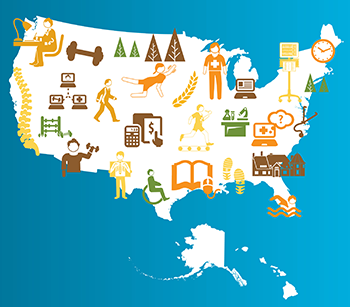Every state has much to offer physical therapists and physical therapist assistants. It may be quality of life. Employment opportunities. Regulatory and business friendliness. Or any of dozens of other features. But to make it to the top of PT in Motion's third annual analysis of the best states in which to practice, states needed high rankings in multiple factors that health care professionals say are important.

What's the best state in which to practice physical therapy?
The answer of course depends in part on what you value. How important is salary? Quality of life? Future job prospects? Fewer regulatory restraints? The demographic characteristics (such as age and health) of the state's residents? And so on.
Many rankings of "best states" use some combination of these factors. PT in Motion's analysis uses these 8 criteria: